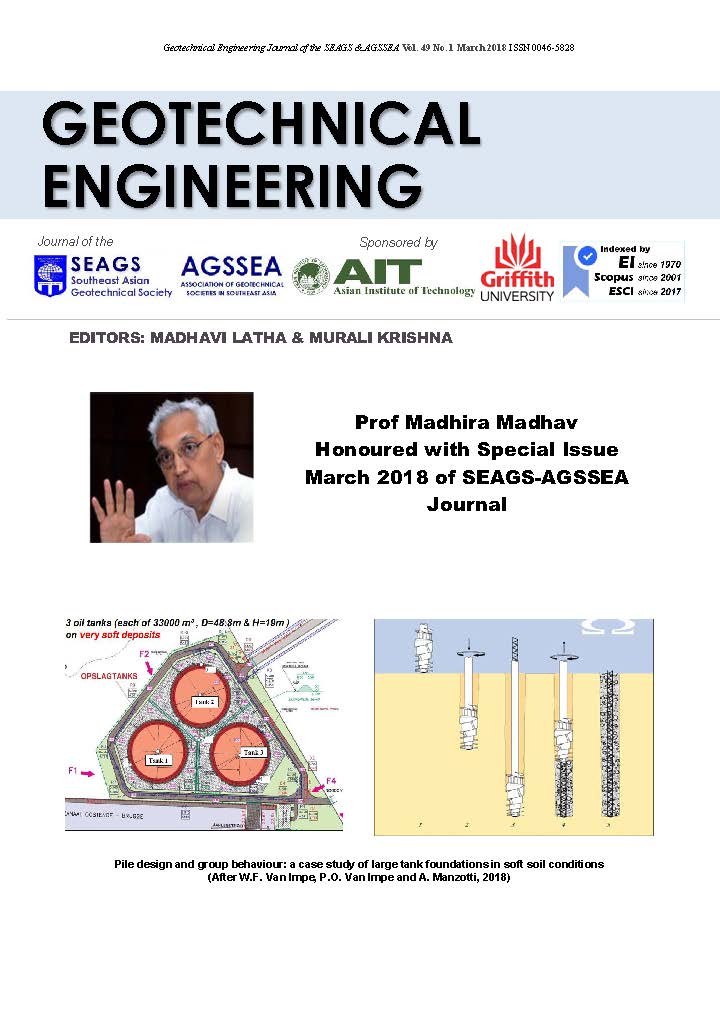Rational Assessment of Modulus of Subgrade Reaction
Main Article Content
Abstract
he concept of modulus of subgrade reaction has been employed within the engineering world for almost 150 years. It has been especially embraced by structural engineers who have found it convenient to represent the behaviour of the ground supporting their structures by elastic springs. Despite the best efforts of the geotechnical profession to dissuade our structural colleagues from using this flawed concept in foundation design, requests to provide a modulus of subgrade reaction continue almost unabated. Given this situation, a suitable response is to provide such values via a rational process of evaluation, rather than by empirical correlations which have little theoretical basis and which may not be applicable to the foundation being considered.
This paper sets out an approach to the estimation of values of modulus of subgrade reaction for various types of foundation. The key points made are that the modulus of subgrade reaction (k) is not a fundamental soil property, but varies with the foundation type, foundation dimension, and type of loading. k can be related to the Young’s modulus of the supporting soil and to the foundation dimensions, but for pile groups, account must be taken of the reduction in k because of group effects arising from pile-soil-pile interaction. It is also emphasized that careful distinction must be made between the modulus of subgrade reaction, k, and the spring stiffness K.
Article Details

This work is licensed under a Creative Commons Attribution-NonCommercial-NoDerivatives 4.0 International License.
Copyright © 2019 Association of Geotechnical Societies in Southeast Asia (AGSSEA) - Southeast Asian Geotechnical Society (SEAGS).


